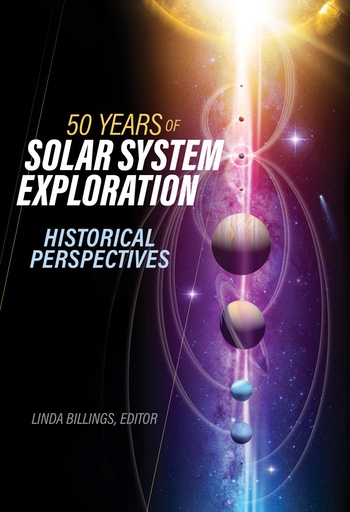Review: 50 Years of Solar System Explorationby Jeff Foust
|
| Missions rise and fall based on executive and legislative branch support and the ability to gain and retain international partners. |
The chapters examine a range of topics in solar system exploration: not a comprehensive look at everything, but instead detailed studies of selected topics. One chapter, for example, looks at the long history of Mars sample return. The initial concepts for sending spacecraft to Mars to grab samples for return to Earth date back to the 1970s, but were deemed infeasible. (JPL tested whether it would be possible for a rover to autonomously move on Mars, using an engineering model of an Apollo-era lunar rover. It worked, but it moved only a few centimeters in a day and had to be hooked up to the center’s fastest mainframe.) But the idea came and went several times before it finally caught traction in recent years with the Mars 2020 rover Perseverance and the ongoing development of follow-on missions that will bring samples Perseverance caches back to Earth in the early 2030s.
There is not a broad, overarching theme to the papers, beyond the importance of policy and politics to planetary exploration. Missions rise and fall based on executive and legislative branch support and the ability to gain and retain international partners. While the papers come from conference presentations in 2012, many include updates that stretch closer to the present day, incorporating policy and technical developments such as advances on Mars sample return.
The papers do suggest some topics for future study. An example is the relationship between NASA and its closest international partner in space science, ESA. That long-running relationship has suffered a variety of problems, usually from NASA being an unreliable partner on programs ranging from the International Solar Polar Mission (later Ulysses) to ExoMars. It would be completely understandable if ESA simply walked away from partnering with NASA on future missions, but it has not, being closely tied on Mars Sample Return as one example. The relationship seems closer now than it has been in the past as well, but how it evolved and why is an interesting story and a reminder of the role that people, politics, and policies play in exploring the planets.
Note: we are using a new commenting system, which may require you to create a new account.
